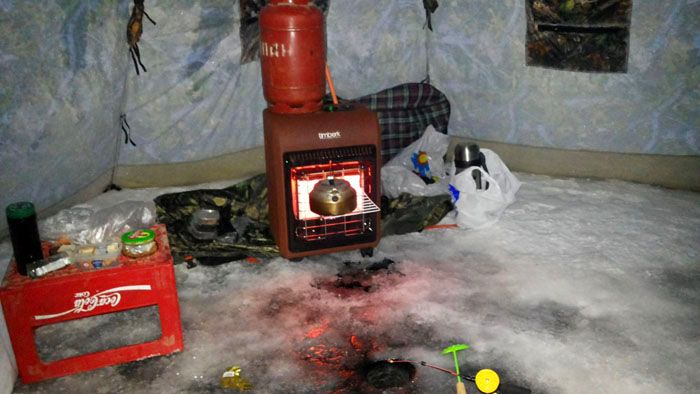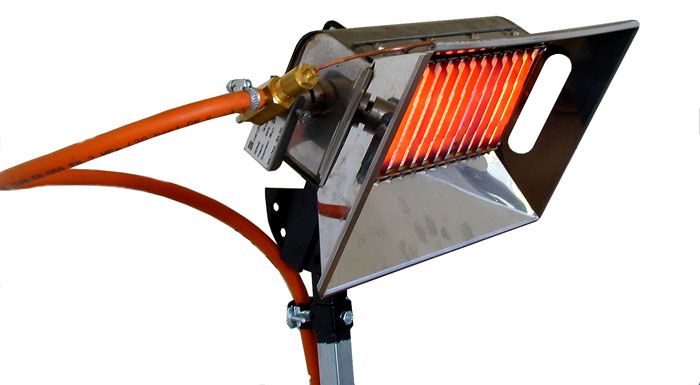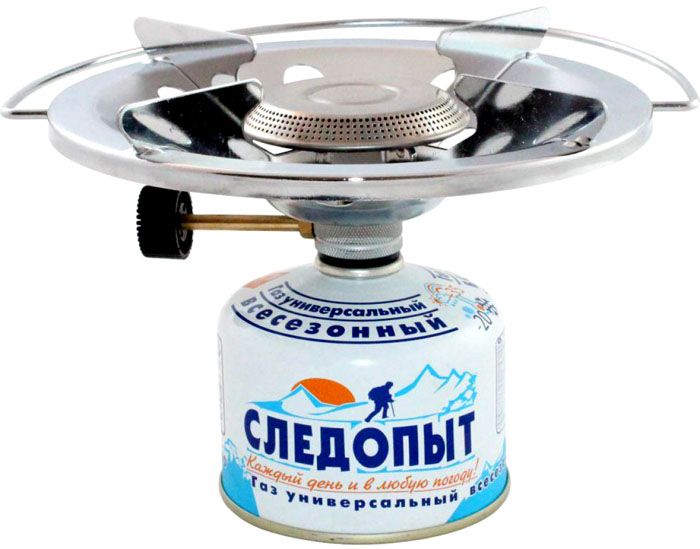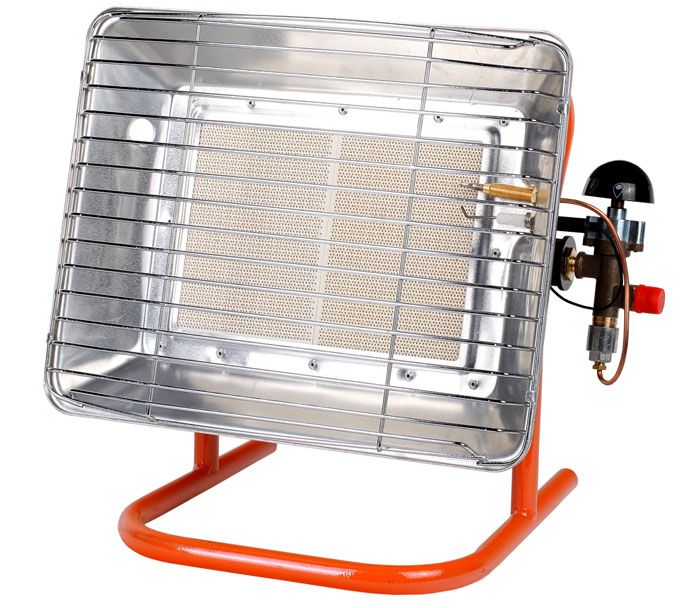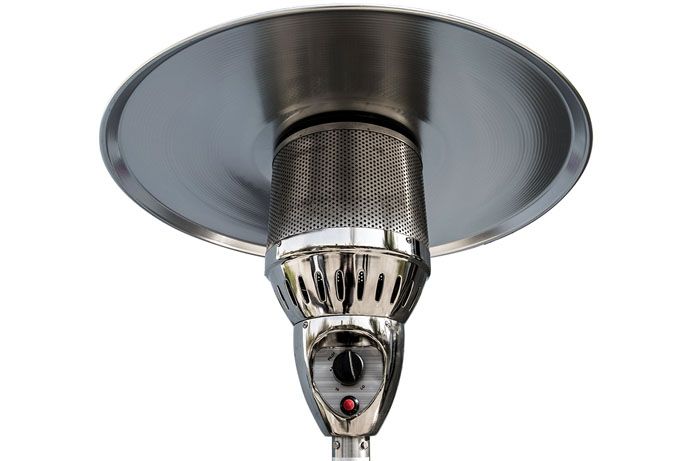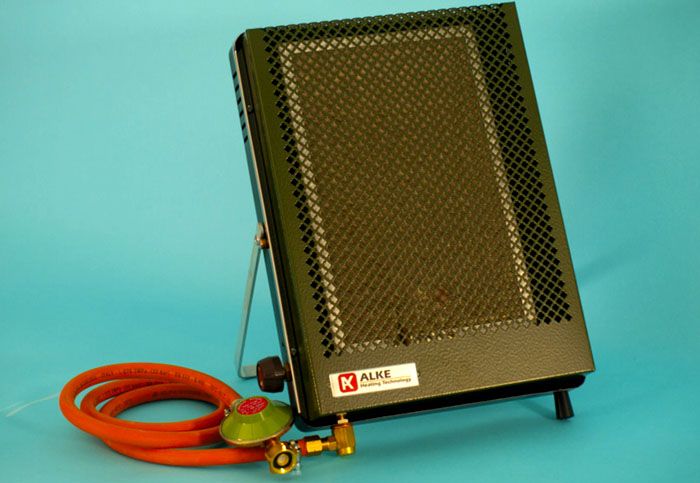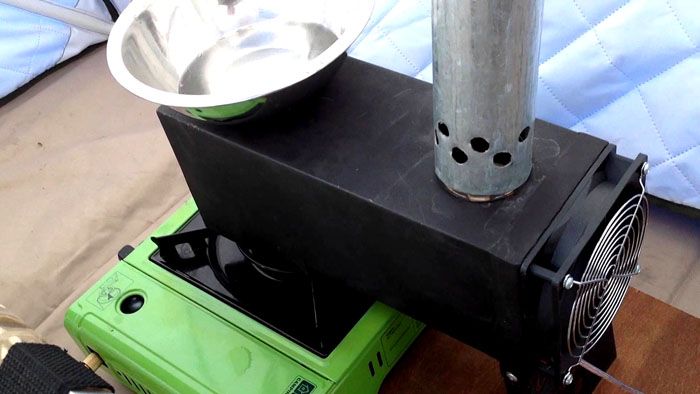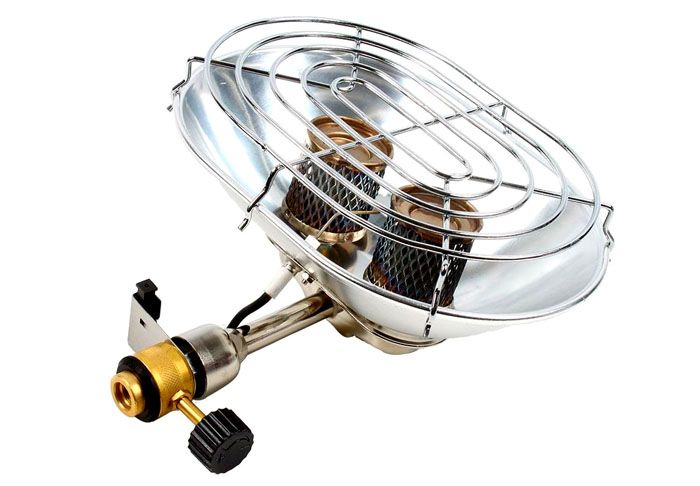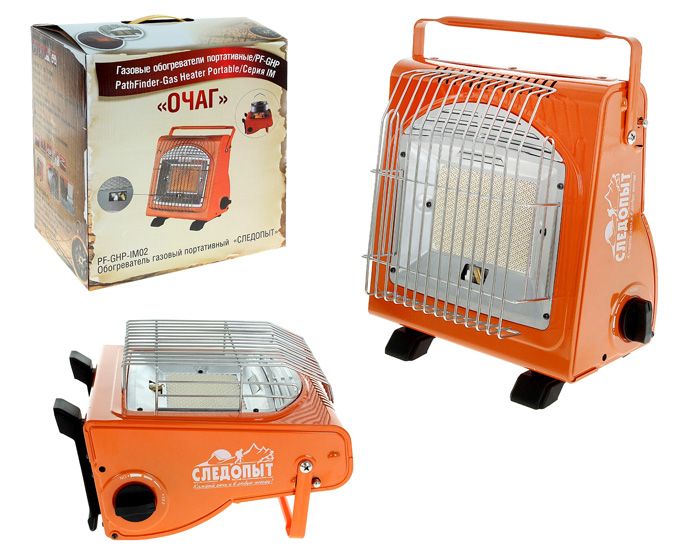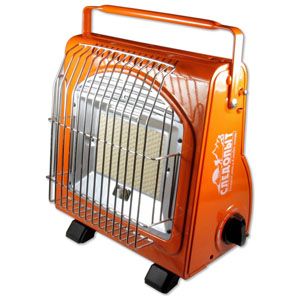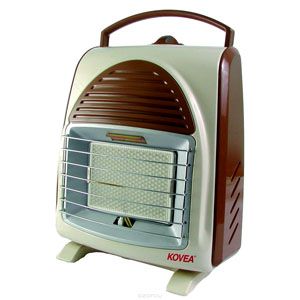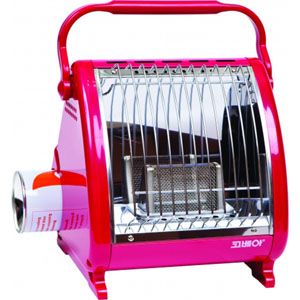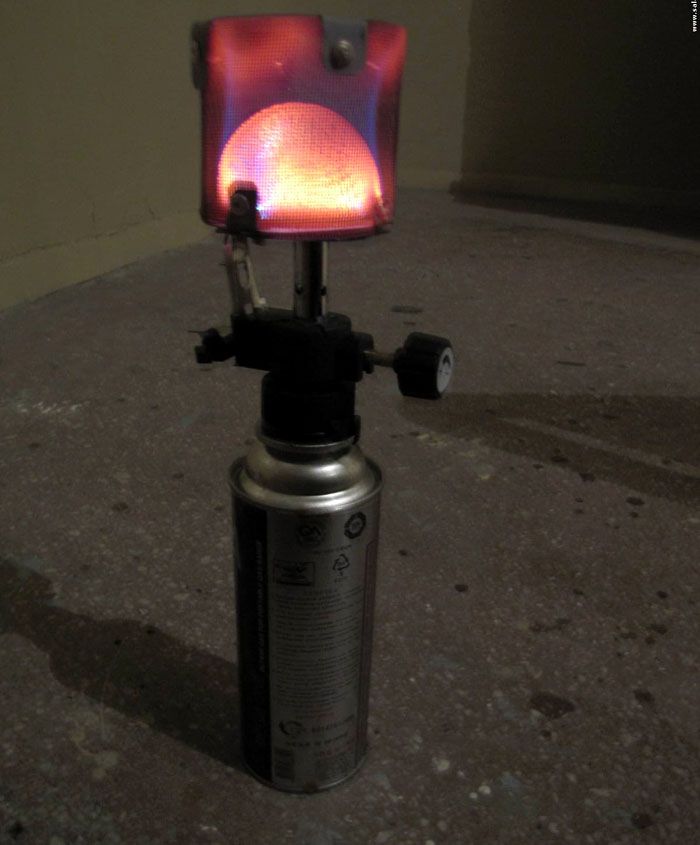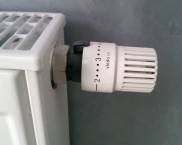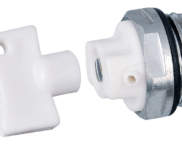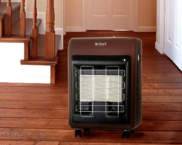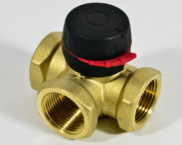How to choose and use a gas tent heater
The classic way to keep warm on a hike is by a fire. But experienced tourists and fishermen know that it is often not enough, for example, in a cold season or during an overnight stay in a tent. A modern gas heater for a tent will help ensure comfort in any conditions. It is compact, self-contained and safe when used correctly. Read about how to choose a device and how to use it in this review.
The content of the article
- 1 How does a gas tent heater work and how does it work?
- 2 What you can use a portable gas heater for
- 3 Advantages and disadvantages of devices: what is important to know so as not to regret buying
- 4 What technical characteristics of devices are important for the user
- 5 Types of Travel Gas Tent Heaters
- 6 Features of the choice of metal, catalytic and ceramic infrared gas burner
- 7 Safe use rules
- 8 Review of popular models
- 9 Reviews of professional tourists and fishermen about gas heaters for tents
- 10 Gas heater cost for tent
- 11 DIY gas heater for a tent: assembly instructions from scrap materials
- 12 Video: how to properly assemble the structure
How does a gas tent heater work and how does it work?
The devices themselves can be different in design and principle of operation, but they are united by the fact that a miniature gas cylinder serves as a source of energy. It is installed inside the device or connected via a hose.
Most heaters work according to the principle infrared radiation... In them, the fuel is burned in the burner and heats up the heating element. It radiates heat in the infrared range, heats objects inside the tent, and they, in turn, release it into the air. There are other designs, read about their device below.
The elements of an autonomous tent heater are hidden in a metal case.The total weight of the device without a balloon is on average 0.3 ÷ 2.0 kg.
The structure consists of the following parts:
- fans - help to distribute heat evenly.
- power regulator - allows you to change the temperature.
- gas burner - a source of thermal radiation.
- reflector - a reflector that directs heat in a certain direction.
- heat emitter - an element that accumulates thermal energy and transfers it to air and surrounding objects.
- gratings - protects the heating element from contact with objects.
On a note! 92% of infrared energy heats objects, floors and walls, only 8% accumulates in the air.
What you can use a portable gas heater for
A camping gas heater is suitable for use in any natural environment. The spent cylinders can be replaced, and the device does not need electricity. Therefore, with a supply of gas with this device, you can even go on a long hike.
Use for its intended purpose, that is, for heating, is possible both indoors and outdoors, but in the second case, the efficiency of thermal radiation will be minimal.
The device can also perform additional functions that greatly facilitate living in natural conditions. Some models of infrared heaters are suitable for:
- for drying clothes;
- for cooking food;
- for heating water.
At night, a heater is also a lighting device. Therefore, in any trip: long or short, summer or winter - it will come in handy. And unity with nature will be more comfortable and enjoyable.
Advantages and disadvantages of devices: what is important to know so as not to regret buying
Why modern gas devices for heating a tourist tent are so good:
- Economical fuel consumption 65 ÷ 75 g / h. One cylinder, turned on at full power, is enough for 10-12 hours of continuous operation of the device.
- Small size and light weight. Taking into account the fact that it is also a cooking device - the dimensions of the device are insignificant and will take up a small part of a tourist backpack with a full set of food, clothing and a tent.
- Easy to handle. No maintenance other than replacing the cylinder is required.
At the same time, the devices are not perfect, they still have some disadvantages:
- Replaceable cylinders of a certain type and size are required. It will be problematic to buy them in small settlements. In addition, often a cylinder from one heater is not suitable for another.
- In severe frost, the device may fail due to excessive cooling of the contents of the cylinder. The operating temperature of the device is often at least -10 degrees Celsius.
- When the heater is operating in an enclosed space, it is necessary to provide an inflow of fresh air and control the level of carbon dioxide.
- Fire hazard. The switched on device must not be left unattended, installed near flammable objects.
- Self-filling the cylinder with gas is unacceptable.
Portable heaters have both pros and cons, so they should only be purchased and used after weighing all the risks. Most of the drawbacks relate to the unsafeness of the device, therefore, before using for the first time, you must study the instructions.
What technical characteristics of devices are important for the user
Not every heater will perform its task efficiently. In order not to be mistaken with the choice and purchase a device that will meet the requirements and requests of users, it is important to pay attention to some of the technical characteristics of the device:
- Efficiency (coefficient of performance) - the ratio of the energy used for heating and the energy expended for its generation. Measured as a percentage. For gas heaters, values range from 30 to 100%.
- Safety. Many appliances are fireproof and shut off when tilted or overturned. The presence of a carbon dioxide sensor is necessary for heating closed rooms, if the permissible norm is exceeded, the operation stops automatically.
- Heating area and fuel consumption. These rates can vary greatly. A device for heating a single tent will be ineffective in a large tent. Therefore, the power must be selected in accordance with the application.
External characteristics also matter. gas heater: its shape, weight and size. The convenience of using and transporting the device depends on them.
Types of Travel Gas Tent Heaters
There are many types of gas heaters for tents. First of all, devices differ in the design of the burner. They are infrared ceramic, metallic and catalytic.
Devices can be connected to a fuel source in several ways:
- to a large gas cylinder through a hose;
- through the built-in compartment for a portable cylinder;
- installed directly on the cylinder, like a nozzle.
For hiking, it is better to buy a device with a built-in cylinder or a heater nozzle, as they are the lightest and most compact. The separate tank option is suitable for camping or fishing when it is possible to transport equipment by car.
Some devices are equipped with a piezo ignition - this makes operation easier and does not require an open flame source (matches or a lighter).According to the complexity of the mechanism, the method and intensity of heating, the devices are divided into burners, heaters and furnaces.
Gas-burners
The most uncomplicated device in terms of design is a gas burner. It acts as a heater in the tent and cooking stoves... It can be connected to the cylinder via a hose or installed on it.
Its significant disadvantage is the presence of an open flame, which requires constant monitoring of the burner operation.Since there is no additional heat radiator, the efficiency of the device is the lowest. It should be used for short hikes, day fishing or when traveling by car.
The burner can fail even at a temperature of -5 degrees. Therefore, it is of little use for winter hikes.
Important! The burner has the highest fire hazard of any tent heater.
Gas heaters
Heaters are the most common devices for maintaining the optimal temperature in a tent. They are manufactured using a variety of heating elements: ceramic, metal and catalytic.
They are distinguished by their small size, high efficiency, safety and functionality. It is worth buying a tourist gas heater for a tent for all lovers of hiking over short distances.
Infrared Ceramic Gas Tent Heater
This gas tent heater is the most common. It is equipped with a carrying handle. It is connected via a built-in cylinder or hose. Suitable for heating and cooking. The part of the structure with the heating element can be easily rotated into horizontal and vertical position.
Metal tent heater
These devices have a simple structure. The metal rods are heated by the burner and give off heat.The design features of the heater do not always allow it to be used for cooking and heating food. The burner is mounted on a portable cylinder or connected with a hose.
Catalytic heater
A catalytic tent heater differs from a ceramic heater only in the type of heat emitter. In design and appearance, these devices are similar. The device is characterized by high efficiency. In them, the fuel burns without the formation of a flame due to the platinum coating of the emitter. Catalytic heaters are the safest and most durable in terms of the risk of fire.
Gas oven for tent
These devices are called gas heat exchangers. Unlike all the others, a stove is a device for heating a very large area in the winter.The device is powered by a cylinder, connected through a hose.
It consists of a conventional gas burner and a metal body with internal chambers and a fan. Combustion products pass through all chambers, heating the housing and are discharged outside through the pipe.
Such a gas tent heater is often used for winter fishing. Since combustion products come out, it can work for a long time without causing harm and inconvenience to people.
Lack of design in the large size of the cylinder and the device itself, transport is required for transportation.
Features of the choice of metal, catalytic and ceramic infrared gas burner
When choosing a device, it is necessary to answer such questions: what area needs to be heated, how important is safety and whether additional functions are required.The device should be matched to the size of the tent. The radius of action of the heater should be close to its area.
Automatic shutdown when overturning or exceeding the level of carbon dioxide is a big plus, since it is not always possible to keep track of the device. If children go on a hike, it is important that the device is safe in contact. A conventional burner or a metal heater in this case is not the best option - you should pay attention to non-catalytic and ceramic ones.
The device should be easy to use. To make it easier to carry, choose a model with a handle.The ability to change the angle of inclination of the emitter allows you to heat all parts of the room and position the burner horizontally for cooking.
Advice! Before you buy a portable gas heater for a tent, you need to study the reviews of specific models and evaluate their advantages and disadvantages identified in practice in the field.
Safe use rules
Any gas equipment and sources of open flames require careful handling, as they are potentially dangerous. When using tent heaters, follow these rules:
- Study the instructions for connecting and replacing the cylinder.
- Place the device on a flat surface.
- Open the ventilation valve of the tent while the device is operating.
- Constantly monitor the switched on heater.
- Change the cylinder only outdoors.
- Turn off the device during sleep.
- Do not install the device near flammable and explosive objects.
It is necessary to use the heater strictly for its intended purpose, if the device does not provide a cooking function, then this cannot be done. Violation of safety rules is a threat to human life and health.
Review of popular models
In Russia, tourist heaters of the domestic brand Sledopiot are popular. They make compact portable heating devices for single or double tents. Suitable for fishing, hiking and traveling by car.
Various device modifications are available. They differ in the type of emitter, dimensions and technical characteristics.
Pathfinder ION Heater: Ideal for Hiking
The device is a cylinder attachment with a threaded connection. Connection with a collet or household is possible, but using a special adapter. Emitter type - metal. Designed for heating only.
Device technical parameters:
- The maximum heating area is 20 sq.m.
- Fuel consumption - depending on power from 50 to 110 g / h.
- The weight of the device without a cylinder is 370 g.
- Dimensions - 120 × 200 × 215 mm.
- Power - 1.1 ÷ 2.0 kW.
The heater is equipped with a piezo ignition. A standard cylinder is enough for 10 ÷ 12 hours of continuous operation. For the practical experience of using the device of this model, see the form below:
Infrared gas heater "Pathfinder OCHAG": universal for hiking and fishing
A device with an infrared ceramic emitter and a built-in balloon. Used for heating and cooking. The direction of heat can be adjusted. Equipped with a carrying handle and piezo ignition.
Device Specifications:
- The maximum heating area is 15 sq.m.
- The weight of the device without a cylinder is 1800 g.
- Fuel consumption - up to 108 g / h.
- Power - 1.5 kW.
- Overall dimensions - 275 × 275 × 180 mm.
Has a plate for heating the installed cylinder, which allows the device to be used at subzero temperatures. For an overview of the technical parameters of the device, see the video.
Reviews of professional tourists and fishermen about gas heaters for tents
Reviews of gas heaters "Pathfinder OCHAG" and "Pathfinder ION" confirm the productivity of the devices and ease of use, buyers note only minor inconveniences, for example, the failure of piezo ignition, but in this case a regular lighter is suitable for ignition.
Feedback from MaksiMc, Tomsk: Pluses: Lightweight. Powerful. Economical. Not expensive. Gas cylinders are sold at any hardware store.
Disadvantages: Not found.
I bought a gas heater "SLEDOPYT-OCHAG" PF-GHP-IM02 a few days ago. The main purpose of this wonderful device will be to keep us warm in the cold season. During fishing trips, either in a truck booth or in a hunting lodge. I haven't gone fishing yet, but I managed to try it out in the garage. On the street it was -18 in the garage (capital) in the region of -10. Warmed up in 30 minutes (standard garage 18 sq. Meters), to quite tolerable +18. Then I turned the power down to 1/3 and left it on. Since poking around in the car. One gas cylinder, in this mode, was enough for 5 hours. As a result, the temperature was like in the apartment +25. I think this is a very good result, with a consumption of only 1 gas cylinder ...
More details on Otzovik: https://otzovik.com/review_5801575.html
Review of Eger47, Nizhny Novgorod: Pluses: Powerful, heating can be regulated.
Disadvantages: Gas cylinders are expensive.
I want to share my impressions of the portable gas heater "SLEDOPYT-ION"
I am often in nature, whether it is hiking or fishing. In the cold season, I always take a heater with me. With its low weight of only 370 grams and gas consumption from 50 to 110 grams. h and a power of up to 2 kilowatts can heat a room up to 20 square meters, they can heat even a palette, even a small hunting lodge, and also dry damp clothes. Threaded tourist gas cylinders 230 or 450 grams are used for the heater ...
More details on Otzovik: http://otzovik.com/review_2571394.html
Gas heater cost for tent
The prices of devices are determined by the power, the type of emitter, the presence of additional functions and sensors. You can buy a gas tent heater for winter fishing or hiking at camping equipment stores, hunting and fishing departments, and many online shopping sites.
DIY gas heater for a tent: assembly instructions from scrap materials
Heaters of simple design can be assembled independently. But the safety of such devices will be lower than the factory ones. Before use, it is necessary to carefully check the reliability in the open space.
For work, you will need a portable canister with gas and a burner, a metal bowl, a stainless steel glass, metal spirals from old electrical appliances and thick wire.
One cylinder is enough for 2 hours of work - that's enough to keep warm. it cannot be used inside the tent, as there is a source of open fire.
Gas tent heaters are convenient and easy-to-use devices that will make your stay in natural conditions more comfortable. Share in the comments your experience of using such devices.







